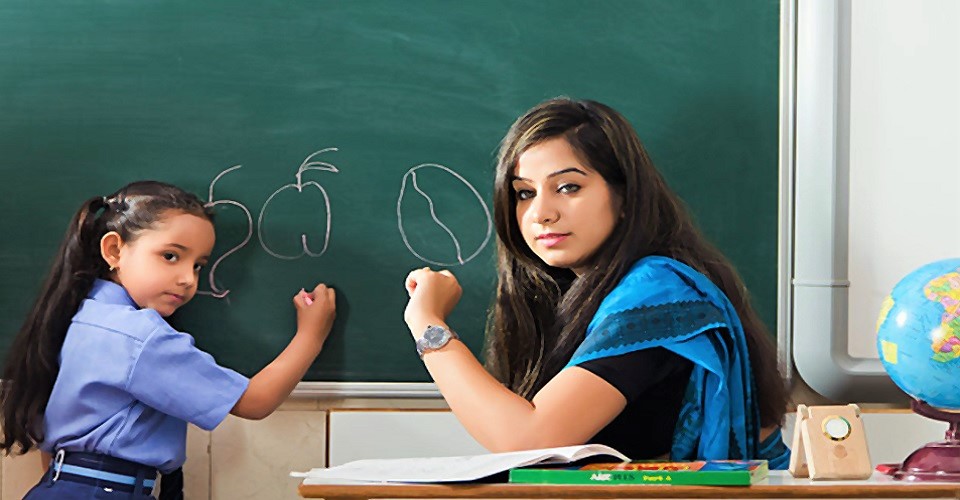Benefits of Learning Ways to Develop Young Learners for Future Pre and Primary Educators
19th February 2020

It is never an easy task for tomorrow’s pre and primary educators to learn the ways of helping the children under their tutelage to transform into students, which might be a disadvantage while becoming successful educators. In this blog, we will have a look at the various ways of helping the children to pave a path of successful transition into young learners, which is important to understand for the learners of the pre and primary teacher training courses, expected to become able educators in the future. But first, we will have a look at what educational transitions are.
Educational transitions tend to happen on the following occasions-
- When schooling starts
- Change of ‘year levels’ within a school
- Transfer from one school to another
- Shift from primary school to intermediate school, and on to secondary school
While students, who are generally children, are navigating the formal school environment, they are also adjusting to the social changes that happen when changing schools and classes. The learners of the pre and primary teacher training courses need to identify these changes, which in turn will help in the future as they look forward to becoming able educators.
There are certain stages in the successful transition of a child into a student at the pre and primary level. When the young learners start their class, they must adjust to new surroundings, become familiar with new teachers and peers, learn new ways of working, and make sense of the rules and routines that they implement in their classes.
1. Intellectual Aspect
Young learners are curious, motivated to achieve when challenged, and capable of critical and complex thinking. Students have opportunities to be curious and to have their thinking extended and challenged. This is something that a future pre and primary educator needs to put emphasis on while pursuing the pre and primary teacher training courses so that it becomes easier for him/her in the future while teaching the young learners.
2. Social Aspect
The young students’ need to be social and to know about themselves, is met through a culturally responsive programme and a classroom culture that celebrates diversity. Young learners have an intense need to belong and be accepted by their peers while finding their own place in the world. This is something that the pre and primary educators should inculcate and implement to make the overall teaching-learning process more impactful and effective for the students under their tutelage.
3. Physical Aspect
Young learners become mature at varying rates and go through rapid and irregular physical growth, with bodily changes that can cause awkward and uncoordinated movements. This can be a detriment in their transition and should be handled by the pre and primary teachers in order to eradicate the physical barriers and cater to the holistic growth of the young learners.
4. Emotional and psychological Aspect
A pre and primary or early childhood teacher must be sensitive to the emotional and psychological changes that are happening to students. This not only helps in the development of a bond between the teacher and the students but also caters to the successful transition of a child into a student.
5. Moral
With their new sense of the larger world around them, young learners are idealistic and want to have an impact on making the world a better place. Therefore, boosting their moral should be another very important job for a pre and primary educator and they should learn about it while pursuing the pre and primary teacher training courses.
Now that we know about the various aspects which a pre and primary educator needs to cover in order to cater to the successful transition of the children into young learners, it is time to look at the benefits that both the teacher and the students can derive from it.
- The students feel that they belong in their new school, and are well included in school activities and programmes. It makes the job easier for the educator as the students already feel at home.
- Both the students and the educator are positively connected to their peers, other students in the school, and to their teachers.
- The students also feel that their teachers know them, including their strengths, interests and learning needs, and show they are interested in them.
- The students and the educator at the helm of their successful transition are understood and valued as a culturally located person.
- Both the students and the teachers have a sense of purpose in being at school.
- The students and the teacher have a mutual understanding and commitment to their learning pathway through their schooling and beyond.
- Their progress is measurable.
- Their current learning follows on from their previous learning (the curriculum is connected and continuous) and is appropriately challenging.
- The teaching-learning process becomes interesting, relevant and fun.
- They are physically and emotionally safe.
- Both the teacher and the students have opportunities to try new, exciting things and/or extend their particular skills/interests (e.g., through extra-curricular activities).
So, it is clear that to become an impactful teacher, it is important for a learner of the pre and primary teacher training courses how to help the children en route to their successful transition into young learners and thus create an atmosphere conducive for the development of the overall teaching-learning procedure.
